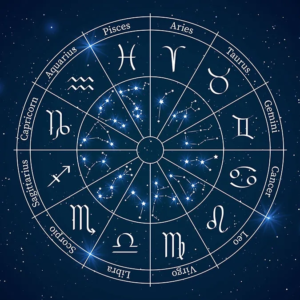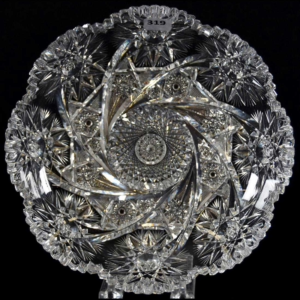Hyaloite stone – properties, virtues & benefits
Hyalite stone, derived from the Opals, is a gemstone with unique properties in lithotherapy. This semi-precious stone is known for its healing properties and its ability to help with emotional and mental balance. In this article, we’ll look at the history of hyalite, as well as its characteristics, origin and composition, and its virtues and properties in lithotherapy.
HYALITE CHARACTERISTICS
- Chakra: Heart.
- Properties: Soothing, creativity.
- Astrology: Venus.
- Zodiac: Pisces, Cancer.
- Elements: Water, Earth.
- Colors: Green, translucent.
- Hardness: 5.5-6.5 (Mohs scale).
- Chemical Formula: SiO2-nH2O.
- Associated god: Aphrodite.
HYALITE – ITS HISTORY
The word “Opal Hyalite” comes from the ancient Greek “hualitis”, meaning “stone”, and “hyalos”, meaning “glass”. The suffix “ite” is added to designate a substance. The stone was discovered around 8,700 BC, but was first scientifically recorded in 1794 by a German geologist named Werner.
To be sure you’re buying genuine hyalite opal, it’s important to turn to a reputable seller and be wary of prices that are too low, as this rare semi-precious stone is generally expensive. You can also check its authenticity by exposing it to UV light or sunlight, because if it glows green, this indicates that it really is genuine. DesPite their small size, specimens of this stone are often very expensive due to their rarity.
HYALITE STONE – ITS ORIGIN AND COMPOSITION
Hyalite Opal is a transparent, colorless, glassy semi-precious stone. It is characterized as an opal-AN, an amorphous silica glass with a water content of around 3 to 8%. It weighs around 10 g and averages 10 × 10 × 10 mm. It was discovered in Hungary and the Czech Republic, then named “Amiatite” in Italy. Today, it is mined in Namibia, Madagascar, the United States and Mexico.
These stones form during the formation of magmatic, eruptive and effusive rocks, when hydrated silica slowly solidifies over millions of years to form spherical, irregular layers as it cools. Hyalite opal may also contain other components, such as uranium for fluorescent opals.
Before being sold, some opals are treated to improve their appearance, notably by sugar treatment, smoking or fracture filling. This stone has a hardness similar to glass, ranging from 5.5 to 6.5 on the Mohs scale, so it’s best to combine it with materials of similar hardness when making jewelry. Although it can be used to make beautiful glass jewelry, it does not have a high value as it is not considered a precious stone.

HYALITE STONE – VERTIES AND PROPERTIES
Hyalite Opal is a stone that is often associated with amorous passion, as well as charm and lust. It is considered a stone that insPires originality and creativity. Some believe it can help attract an ideal partner, strengthen attraction, and even enhance an existing relationship by adding more charm and passion.
HYALITY ON THE PSYCHOLOGICAL LEVEL
The human body contains seven energy centers called chakras, each with a particular influence on the physical, mental or emotional state. Each chakra is associated with a specific color: white and violet for sPirituality, blue for dialogue, orange for social relationships, red for stability, yellow for self-esteem, green for love, and indigo for intuition. Opal Hyalite’s predominant color determines which chakra it will have the most influence on. Although it can be difficult to assign a specific chakra to this stone, it is generally associated with the crown chakra when clear. If it is a bright green color visible after exposure to UV rays or sunlight, its meaning may be different. Fluorescent opals can influence or unblock all chakras.
HYALITE ON THE PHYSICAL LEVEL
Hyalite Opal, also known as “water stone”, contains a high concentration of water. As a result, it can influence the water content of the human body by helPing to prevent water retention and dehydration, which is beneficial for the functions of the body’s limbs and organs. In addition, it can help improve the overall health and quality of hair, skin and eyes.

OPAL HYALITE STONE – CLEAN AND RECHARGE
To clean and recharge the Hyalite Stone, follow these steps:
- Cleaning:
- Prepare a container with warm water and a few drops of mild soap.
- Submerge the stone in water and rub gently with a soft cloth or soft bristle brush.
- Rinse the stone with clear water to remove any soap residue.
- Wipe the stone with a soft cloth and leave to air dry.
- Reloading:
- Expose the stone to natural sunlight or moonlight for several hours. Moonlight is preferable as it is gentler and avoids discoloration of the stone.
- You can also recharge Hyalite by placing it on a quartz cluster or amethyst geode for at least 6 hours.
- To reinforce the stone’s energy, you can surround it with fresh plants or flowers during recharging.
It is recommended to clean and recharge the Hyalite Stone regularly, especially after intense use or during periods of high stress.
WHERE DOES THE NAME HYALITE COME FROM?
The name “hyalite” comes from the Greek “hyalos”, meaning “glass” due to its resemblance to glass in terms of transparency and brilliance. Hyalite is a variety of opal with no color play, presenting a vitreous and often translucent appearance. This gem is also called “glass opal” or “hydrophane opal” because of these characteristics.
WHICH CHAKRA DOES HYALITE ACT ON?
Hyalite acts primarily on the heart chakra, also known as Anahata in Sanskrit. This chakra is associated with love, compassion, emotional balance and interpersonal relationships. By working on this chakra, hyalite stone can promote emotional healing, harmony and openness to feelings of love and kindness towards oneself and others.
WHICH ASTROLOGICAL SIGN IS ASSOCIATED WITH HYALITE?
Hyalite is mainly associated with the astrological signs of Pisces and Cancer. These signs, ruled by water, are in harmony with the soothing and emotional properties of this stone. Hyalite can support these signs in their emotional growth, strengthen their intuition and promote inner healing.
HYALITE STONE SUMMARY
Hyalite is a rare and precious form of opal, a semi-precious stone. It is also known as glass opal because of its vitreous, transparent appearance. Here’s a summary of hyalite’s main characteristics and properties:
- Chemical composition: hyalite is a variety of opal that is composed mainly of hydrated silicon dioxide (SiO2-nH2O). It is distinguished from other forms of opal by its lower water content and amorphous structure.
- Appearance: hyalite has a glassy, transparent appearance, with a slightly yellowish or greenish tint. Unlike precious opal, it has no play of color.
- Hardness and density: Hyalite has a Mohs hardness of around 5.5 to 6.5 and a density of 1.9 to 2.1 g/cm3. It is therefore relatively fragile and must be handled with care.
- Formation and deposits: Hyalite generally forms in cavities in volcanic rocks, where it crystallizes from silica-rich solutions. The main hyalite deposits are found in Mexico, the USA, Australia, Tanzania and Hungary.
- Metaphysical properties: some gem enthusiasts attribute metaphysical properties to hyalite, such as enhancing mental clarity, strengthening sPiritual connection and stimulating creativity.
- Uses: Due to its rarity and fragility, hyalite is generally used for collectibles or designer jewelry. Gemologists and collectors appreciate hyalite for its unique transparency and glassy appearance.

